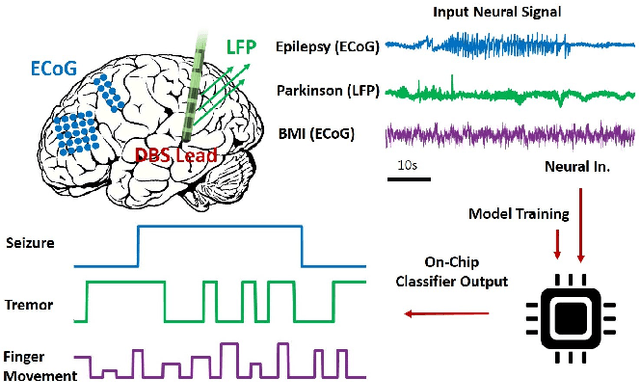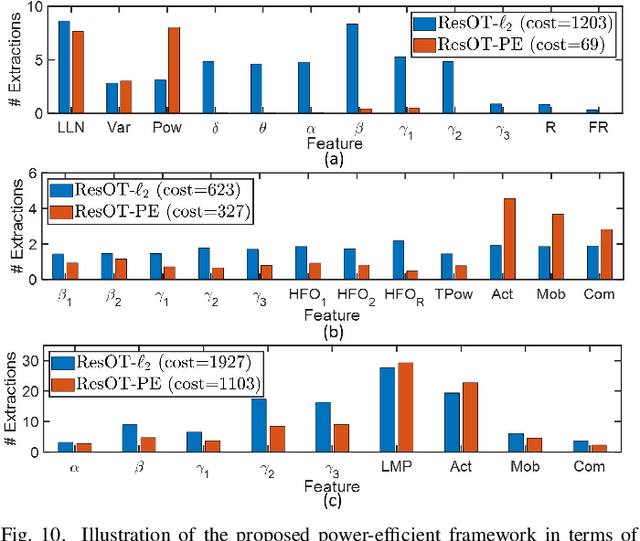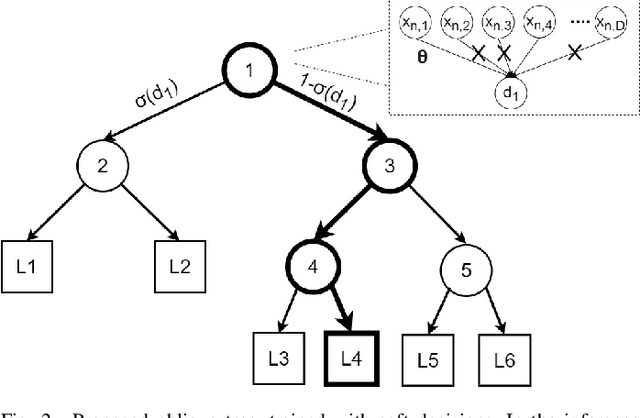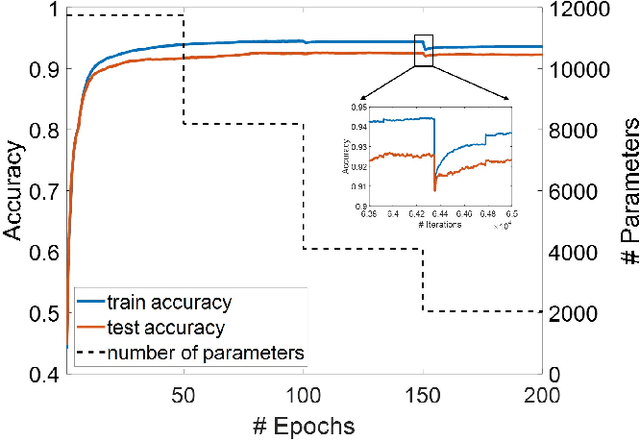ResOT: Resource-Efficient Oblique Trees for Neural Signal Classification
Paper and Code
Jun 14, 2020



Classifiers that can be implemented on chip with minimal computational and memory resources are essential for edge computing in emerging applications such as medical and IoT devices. This paper introduces a machine learning model based on oblique decision trees to enable resource-efficient classification on a neural implant. By integrating model compression with probabilistic routing and implementing cost-aware learning, our proposed model could significantly reduce the memory and hardware cost compared to state-of-the-art models, while maintaining the classification accuracy. We trained the resource-efficient oblique tree with power-efficient regularization (ResOT-PE) on three neural classification tasks to evaluate the performance, memory, and hardware requirements. On seizure detection task, we were able to reduce the model size by 3.4X and the feature extraction cost by 14.6X compared to the ensemble of boosted trees, using the intracranial EEG from 10 epilepsy patients. In a second experiment, we tested the ResOT-PE model on tremor detection for Parkinson's disease, using the local field potentials from 12 patients implanted with a deep-brain stimulation (DBS) device. We achieved a comparable classification performance as the state-of-the-art boosted tree ensemble, while reducing the model size and feature extraction cost by 10.6X and 6.8X, respectively. We also tested on a 6-class finger movement detection task using ECoG recordings from 9 subjects, reducing the model size by 17.6X and feature computation cost by 5.1X. The proposed model can enable a low-power and memory-efficient implementation of classifiers for real-time neurological disease detection and motor decoding.
 Add to Chrome
Add to Chrome Add to Firefox
Add to Firefox Add to Edge
Add to Edge